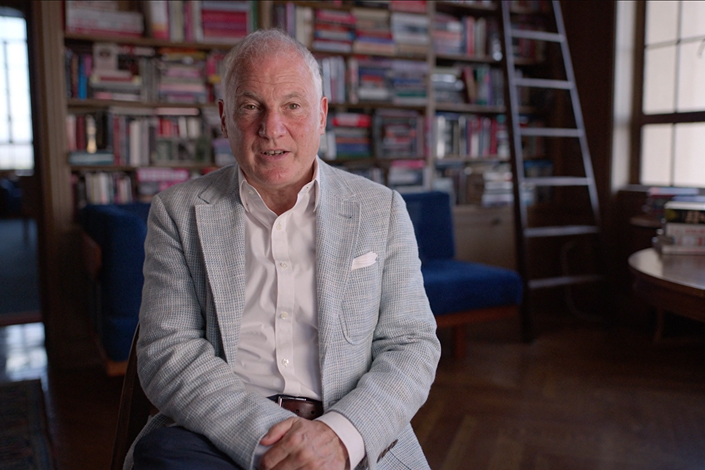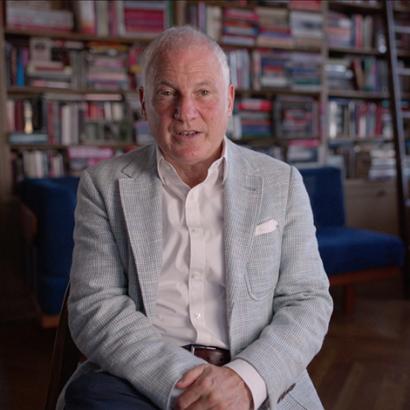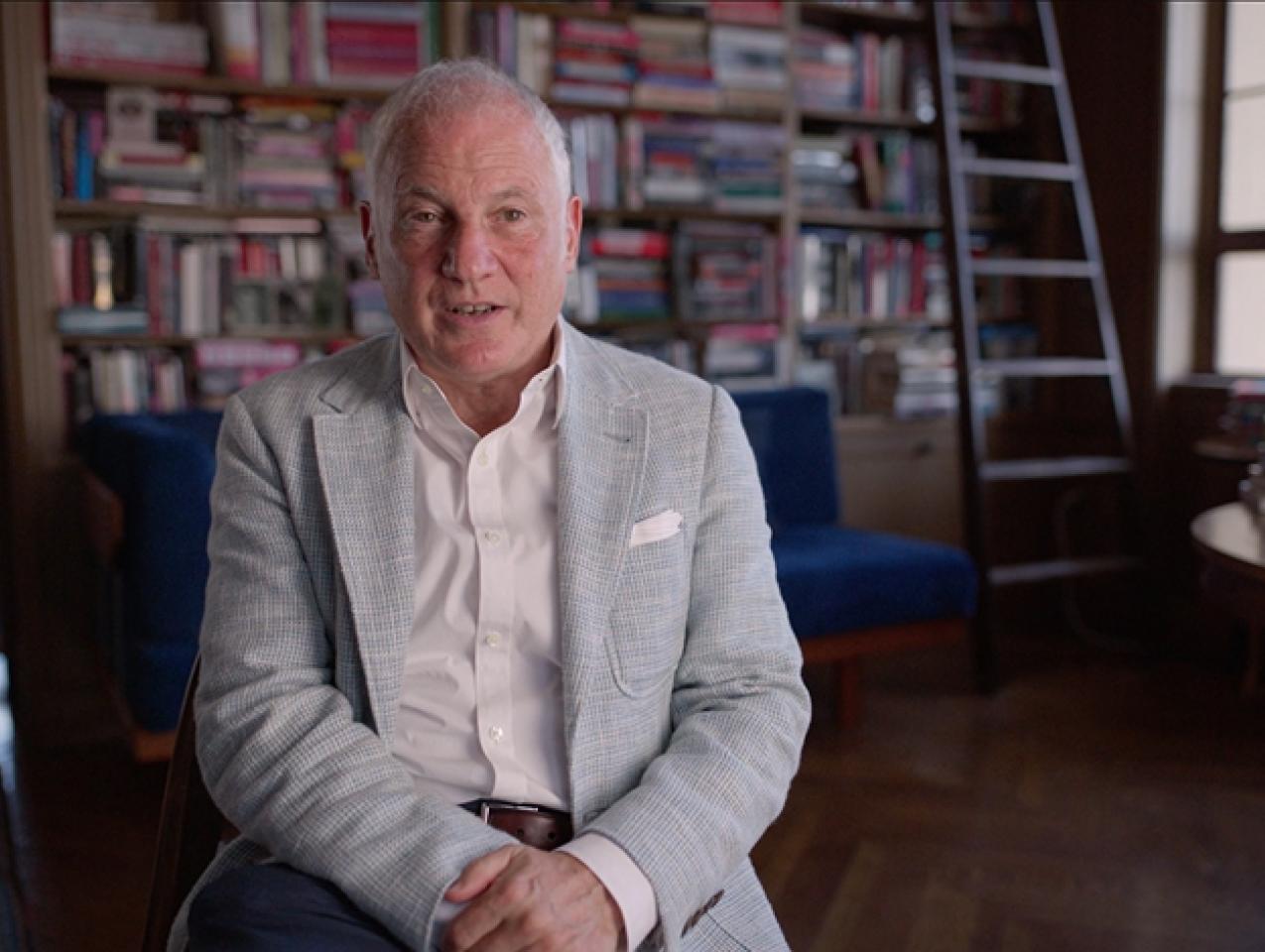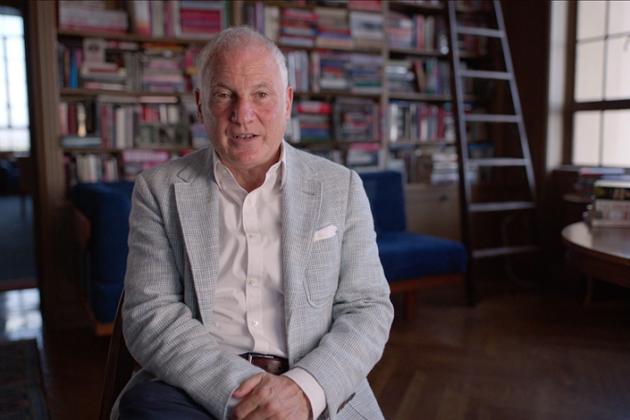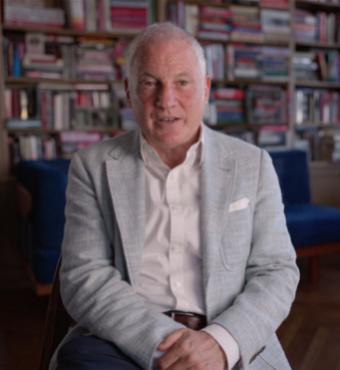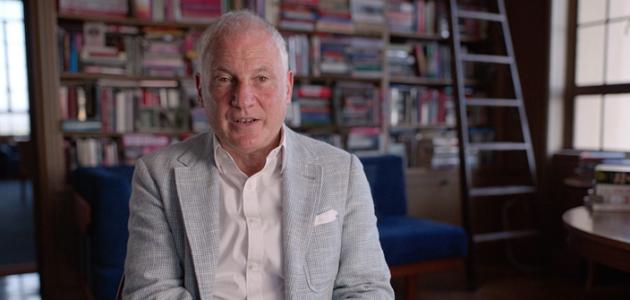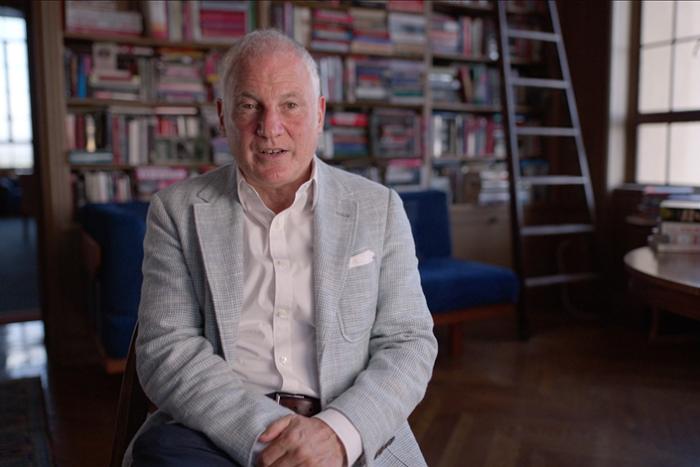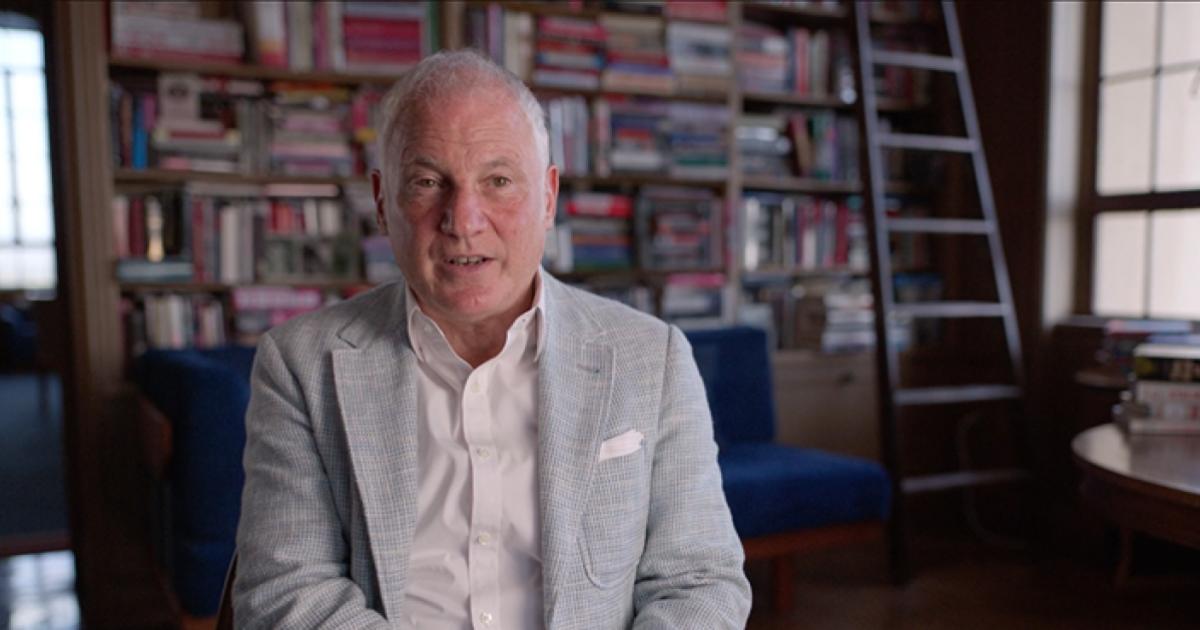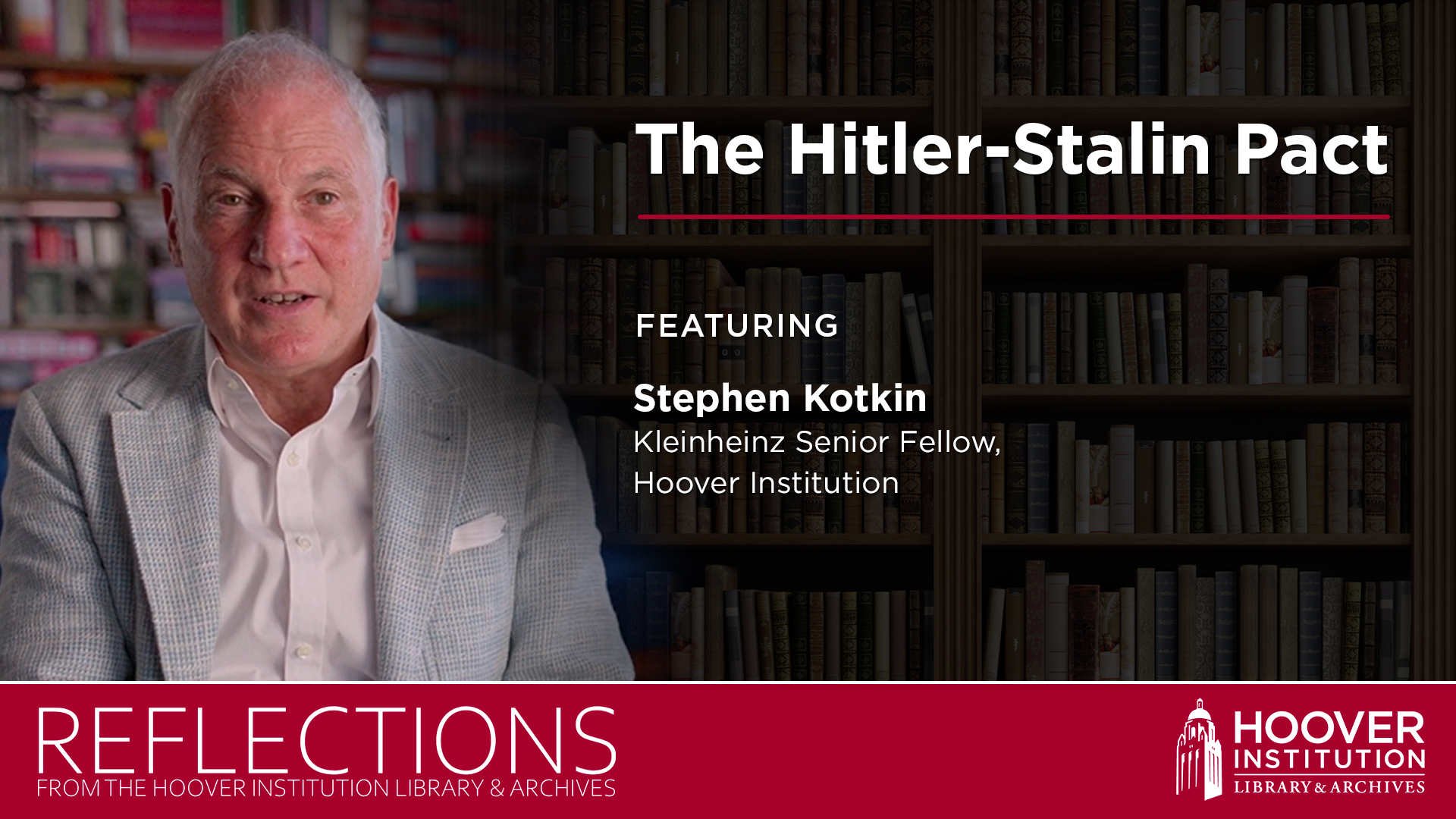- History
- Revitalizing History
The Nazi-Soviet Pact of August 23, 1939, shocked the world. Stephen Kotkin, a Hoover Institution senior fellow and biographer of Joseph Stalin, discusses the purpose of the treaty and its earth-shaking impact and describes rare photo albums housed at the Hoover Institution Library & Archives that document the signing of the pact in the Moscow Kremlin.
The William R. Philp Collection is housed at the Hoover Institution Library & Archives at Stanford University. Explore the finding aid for the collection here.
The Poster Collection is housed at the Hoover Institution Library & Archives at Stanford University. Explore the finding aid for the collection here.
>> Stephen Kotkin: The Hitler-Stalin Pact unleashed World War II. We have here in the Hoover Institution Library and Archives the photographic evidence of this infamous deal.
In all the annals of global diplomacy, there is no treaty more notorious than the Hitler-Stalin pact of August 23, 1939. This is a pact that shocks the world.
It's a non-aggression pact, which means, it's between enemies. It's sometimes called the Molotov-Ribbentrop Pact because they signed it, but it's really a pact between Hitler and Stalin. And the two of them divide up Poland, divide up Eastern Europe, and there's your Nazi-Soviet Pact. Stalin needed the pact in order to prevent an all capitalist attack on himself.
The pact is trying to deflect the German land army westward, the same way that Chamberlain and the Munich Pact of 1938 is trying to deflect the German land army eastward against Stalin. We have here, in the Hoover Institution Library and Archives the photographic evidence of this infamous deal.
Joachim Ribbentrop is the Nazi Foreign Minister. He's the one Hitler sends on his private plane to Moscow to negotiate the final terms of the deal. Vyacheslav Molotov is Stalin's Foreign Minister. He's the number two in the Soviet regime, so he has higher status than Ribbentrop would have in the Nazi regime, but he's also not the decision maker.
Stalin is the sole decision maker. And the Soviet regime, we have to remember how powerful these images are when we say that it shocks the world. What do we mean by that? Well, there couldn't be two bigger ideological enemies than Nazism and Soviet Communism. They hate each other.
They're pouring filth over each other. Their propaganda is completely geared to the other being the threat to global civilization. And so the idea that they'd sign a pact together is just astonishing. Hitler's attack on Poland on September 1, 1939, is often used as the date for the start of World War II, at least in the European theater.
The Nazis are completely embarrassed, of course, once they turn on the Soviet Union and attack on June 22nd, 1941, but the same shame exists on the soviet side. Stalin is also in photographs with the Nazi foreign Minister. Smiling, smoking cigarettes, having a jolly good time with what look like old party comrades.
Which is deeply embarrassing, because now these men that he signed the pact with have turned against him and are attacking him with the largest invasion in the world is ever known. Even to this day, the Nazi invasion of the Soviet Union, June 22, 1941. So it's really important to understand that the Hoover Institution Library and Archives ended up in possession of these materials.
Collecting is a real challenge in the modern world, especially when you're collecting war, revolution, and peace. Where there's violence, there's burning, there's destruction on purpose, that's what's happening. And the Hoover Institution Library and Archives are dedicated to collecting to show people, as Herbert Hoover intended, the folly of war, the importance of peace, and the dangers of revolution.
Finding, getting your hands on, and preserving these documents is not just critical, but it's really hard. The fact that these are preserved through all of that, through the Nazi shame, as well as through the destruction of Berlin, that's what the Hoover Institution Archives is all about.







